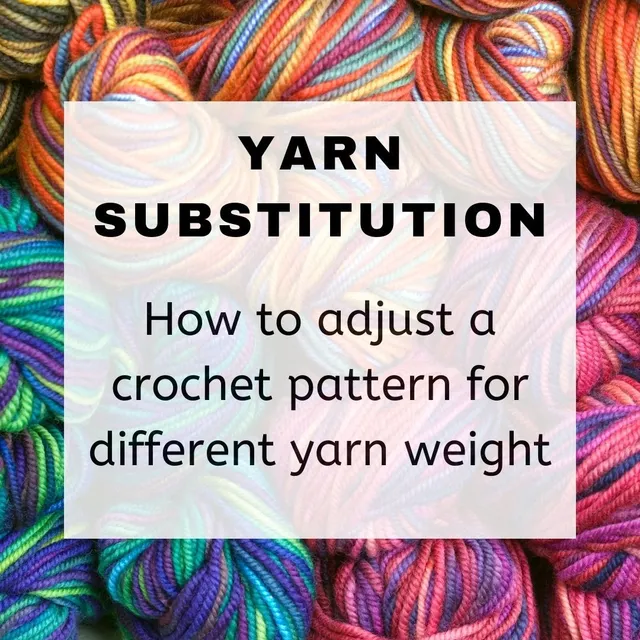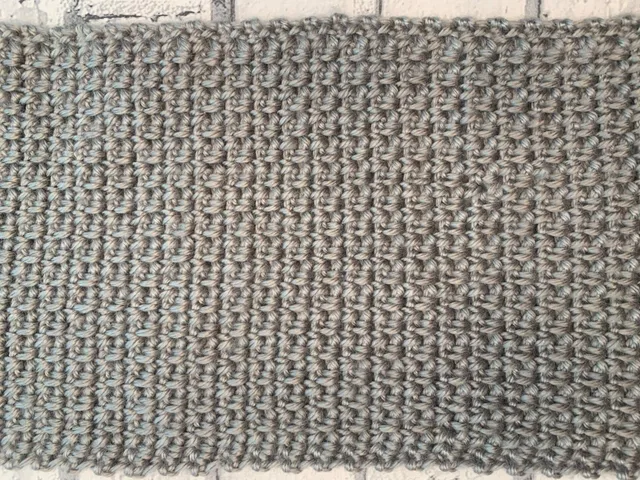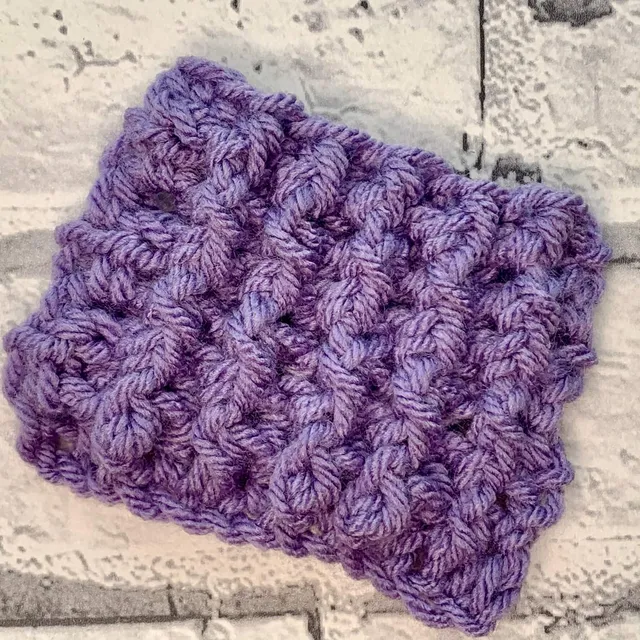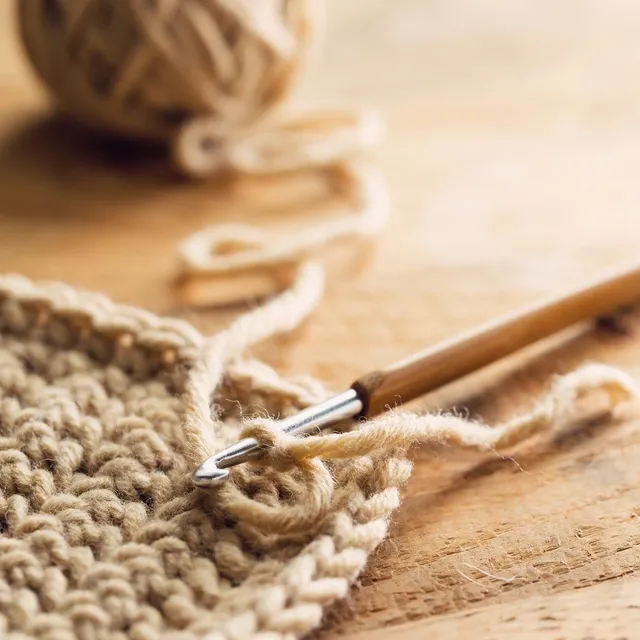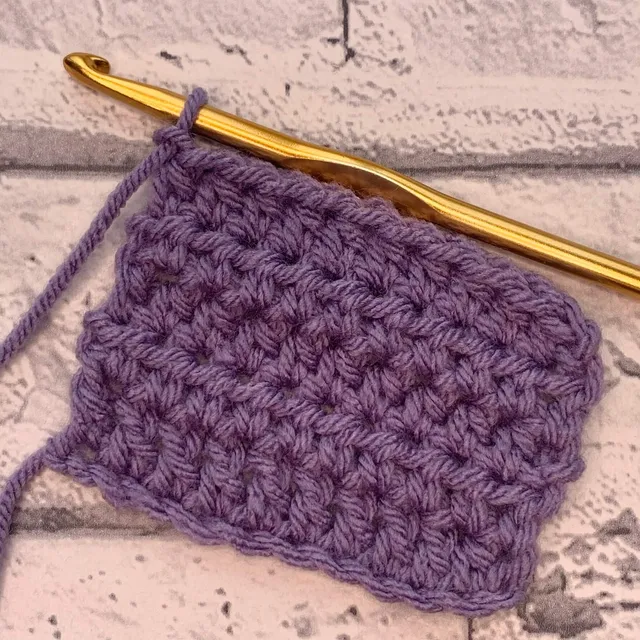Advantages of Acrylic Yarn For Crochet
Learn all about acrylic yarn including the advantages and disadvantages of acrylic yarn, What is acrylic wool made of and what is acrylic yarn is good for crochet. You will also find out why acrylic yarn is the one of the most popular manmade fiber to crochet with.

Properties of Acrylic Yarn | Yarn Fiber Explained
Acrylic yarn continues to be one of the most popular yarns to crochet with and in this article we will be learning why that is.
Here you will find out more about:
- What is acrylic made of
- Characteristics and Advantages of Acrylic yarn
- Disadvantages of Acrylic Yarn
- What crochet projects is acrylic yarn good for?
- What crochet projects is acrylic yarn NOT good for?
- How to wash 100% acrylic yarn | Care Instructions
This is article is part of the Types of Yarn Fibre Explained series where you can learn more about all the most popular yarn to crochet with. Click here to see all the fibres included in the series.
Please note that some of the links in my blog are affiliate links. I may earn a small commission if you purchase via this links, but the price you pay is not affected
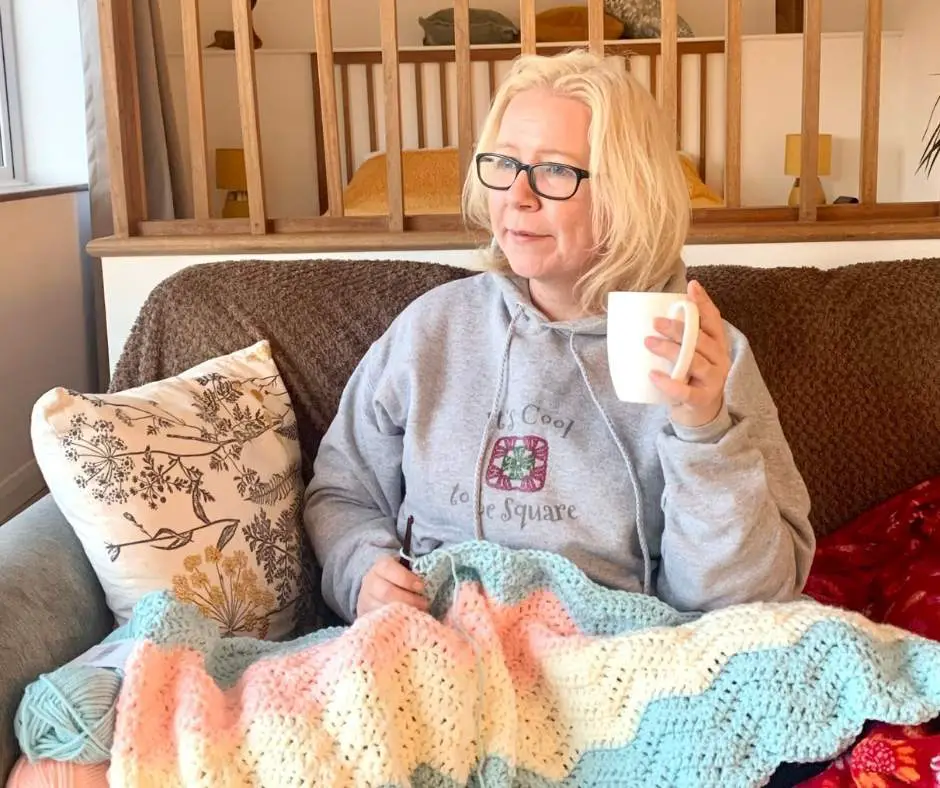
What is acrylic made of?
Acrylic is a synthetic material that can be made into a wide range of different items and products including:
- textiles and fabrics – spun to create fibers that can be woven to create tracksuits or linings for inside shoes
- Paint
- Plastics
- Fibre optic cabling
- Perspex
- Yarn for crochet
Acrylic yarn is a type of plastic made from coal-based and petroleum chemicals, making it a fossil fuel-based fiber.
The petroleum is firstly chemically treated to create the formation of acrylonitrile polymer.
The polymers are then dissolved to create a gel which can be spun in to long, thin fibers using a spinneret.
The fibers are then washed and stretched, then can be be wound to create skeins to balls of yarn as we know it.

Acrylic Yarn vs Wool
Acrylic yarn was developed in 1940 by the American DuPont Corporation to recreate the properties of wool, a natural fibre.
By 1970, concerns were raised about the potential toxicity and carcinogenic attributes of acrylic and it’s use and popularity waned.
Acrylic yarn is spun from fibres just like wool, but acrylic fibers are longer than natural wool fibers making it more lightweight than wool.
More people are also using blended yarns to get the best properties of the different fibers and reduce the environmental impact of using fossil fuel-based yarns.
Cost is also a big deciding factor when comparing the 2 fibres. Wool can be more expensive than acrylic yarns.
It’s a popular opinion that wool is softer than acrylic yarn, but with modern acrylic yarns, this is no longer the case.
Characteristics and Advantages of Acrylic yarn
As acrylic yarn was originally created to rival wool, it has a lot of similar characteristics as wool.
There are high number of advantages to choosing acrylic yarn for your crochet projects. Below you will find the list of the characteristics and advantages of acrylic yarn:
- Dries quickly
- Easy to wash
- No shrinkage (unless washed/dried in high temperatures)
- Lightweight – when compared to natural yarn fibres, acrylic has a lower fiber density and therefore will weigh less than natural fibers yard for yard. This is why acrylic is a great choice for those bigger crochet projects – it will weigh less!
- Resistant to moths – Another benefit of the acrylic yarn is the since it is synthetic fiber, it is impossible for moth larvae to digest it.
- It’s important to note that any food spillages on your acrylic projects must be cleaned before storing to prevent moths being attracted to those spills and stains.
- Soft – the different ways in which the fibres are treated during the spinning process can result in softer yarns.
- Warm – the nature of this manmade fiber is to replicate wool so it has similar heat retaining properties. Not quite as warm as natural fibres and also doesn’t wick moisture away.
- Durable – acrylic yarn is a petroleum based fiber, so will last for a long time – some might way forever.
- Price point – from economy acrylic through to premium acrylic, as a general rule, acrylic yarn costs less than natural fibers making it a popular choice for beginners and those keeping the cost of crafting down.
- Range of colours – colour added during chemical process which results in making it colour fast and no colour running
- Wrinkle resistant
- Elastic – another quality of acrylic yarn that makes it a great choice for beginners and creating a more forgiving garment
- Stitch definition – some acrylic yarns create very defined stitches if the yarn doesn’t have a high halo (fuzz) point.
- Hypoallergenic – The synthetic fibers that acrylic yarn is made from are perfect for folks who are either allergic to lanolin (common in wool) or are sensitive to the scaling of wool fibers.
Disadvantages of Acrylic Yarn
Like all things, with lots of advantages, there must be some disadvantages and this is true of acrylic yarn too.
- Not Breathable – unlike those natural wool fibers, the space between the fibers doesn’t allow air to freely move through. It keeps us warm by trapping our body heat in the fibers.
- Water Resistant (hydrophobic) – this characteristic of acrylic can be confusing as although acrylic yarn will repel water, it is also moisture wicking. This means that when worn, it will absorb moisture including sweat and the smells associated with it. If acrylic yarn is soaked such as wet blocking or a heavy rain downpour, it will absorb that water and hold on to it.
- Prone to static
- Flammable – this rules out use in crochet projects that will involve heat such as pot holders or other kitchen projects.
- Quality – people have found inconsistent in some brands with lumpy fibers or yarn that is easy to knot while in use.
- Rough texture – Acrylic has come along way since it was first produced and there are much softer acrylic yarns available on the market now. The softness isn’t always related to the quality either. It was previously known as being stiff to crochet with, rough in the hands and sometimes squeaky. Nowadays, acrylic yarn isn’t often found to have those poor qualities
- Negative impact on the environment
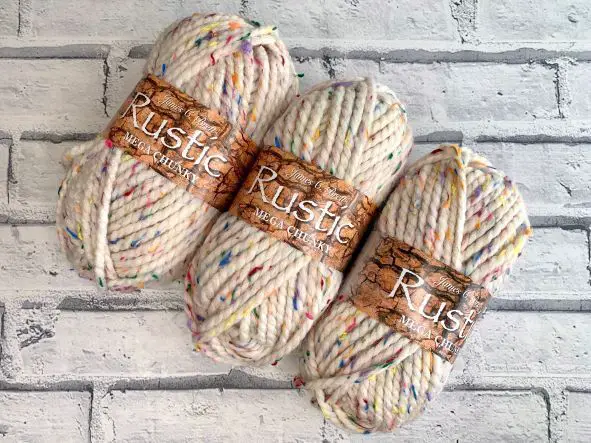
What crochet projects is acrylic yarn good for?
There are an endless number of crochet projects you can make with acrylic yarn.
When you consider the easy care properties of acrylic yarn, it becomes a great yarn to work up crochet garments and many other crochet projects.
Acrylic yarn is good for:
- Blankets
- Cold weather sweaters
- Hat’s and scarves
- Gloves
- Slippers
- Shawls and wraps
- Amigurumi and plushies
This list is in no way exhaustive, but you should be aware that there are some projects that acrylic yarn is not suitable for.
What crochet projects is acrylic yarn NOT good for?
Any crochet project that will be used with direct or indirect heat because acrylic yarn is flammable:
- Potholders
- Oven gloves
- Bowl cozies
Frequently Asked Questions about Acrylic Yarn
Is Acrylic Yarn harmful for the environment?
Like all manmade plastics, the answer is undoubtedly, yes.
The chemical process to create acrylic is more harmful that using the yarn itself, but as acrylic is used in so many products, it’s unlikely to stop being produced anytime soon.
Acrylic yarn is not biodegradable unlike natural yarn fibers, so, if for any reason your project ends up in landfill, it will be there for a very long time. It’s also reported that micro-plastics are shed every time acrylic is washed.
Is acrylic yarn cacogenic?
There are a lot of articles on the internet warning of the risks when using acrylic yarn but, just because it’s made of plastic, it doesn’t mean it’s toxic on the whole.
Some of the chemicals used in the production of acrylic yarn are toxic and the polymer created when making the fiber, acrylonitrile is also considered toxic.
Provided it’s used in the way intended, there are not currently any known cases of cancer caused exclusively by acrylic yarn.
If the toxicity is a concern, there are so many other fibres out there to chose from, you won’t miss out on using this yarn.
Is Acrylic yarn safe babies?
Acrylic yarn is safe for babies. Some people will avoid working up baby projects using acrylic yarn due to the risk associated with it’s flammable properties and the potential carcinogens in the yarn, sticking to the natural fibers that are more gentle to the skin.

How to wash 100% acrylic yarn | Care Instructions
100% Acrylic yarn is one of the simplest yarns to wash, launder and care for.
Nearly all acrylic yarn is machine washable; You simply need to use a warm wash cycle with your normal detergent and fabric softer and you’re good to go. Some acrylic yarn can even go in the tumble dryer too!
Here are some of the common questions asked about washing and caring for your crochet projects made in acrylic yarn:
Does acrylic yarn shrink?
Acrylic yarn should not shrink when washed unless it is washed in hot water. Even then, the shrinkage will be minimal.
However, if washed in hot water, it will shrink enough to make a garment too small to fit as the stitches will melt.
Put the Iron away!
Direct heat from the iron will not only flatten the stitches as it does with natural fibres, it will case your crochet fabric to melt. Put the iron away, unless it is being steamed, with at least 1 inch space between the iron plate and your project.
Should Acrylic yarn be hand washed?
If you are washing a handmade crochet garment, you may still want to handwash the item. Handwashing will reduce the amount of yarn halo (fuzzy fibers) being released during the washing process and therefore create less pilling of the synthetic yarn.
Why should acrylic yarn be air dried?
When acrylic yarn is dried in the dryer, the risk of static is raised considerably. It will also reduce the amount of pilling during the drying process.
Once your acrylic project is washed, simply dry flat as you would a project made in natural fibers.
How to soften Acrylic yarn?
Like any yarns, acrylic will soften when washed using a fabric softener. It has been noted that without a conditioner, acrylic yarn can feel stiffer and squeaky after washing.
Your normal washing detergent and fabric conditioner will help soft up your project once it’s finished.
If you have used acrylic yarn that is stiff and squeaky as you’ve used it, you can also pre-soak the finished project in luke warm water with a fabric softener designed for delicate fabrics for 20 minutes before washing in the machine.

Why do people prefer acrylic yarn over wool?
Wool continues to be the most popular fibre to knit and crochet with. However, it’s all down to personal preference.
There are so many factors that go into purchasing yarn to crochet with, that it’s easier to consider how you make your choices when choosing yarn.
My reasons for loving acrylic yarn are about about the ease of working with the yarn, choosing yarn that’s easy care and doesn’t require hand washing every time and the huge range of colours available.
I love working with natural fibres, but there are times that acrylic will do a better job and give my project a better finish.
Come on over to the Cosy Rosie Crochet Community and share your loves and loathes of acrylic yarn.

